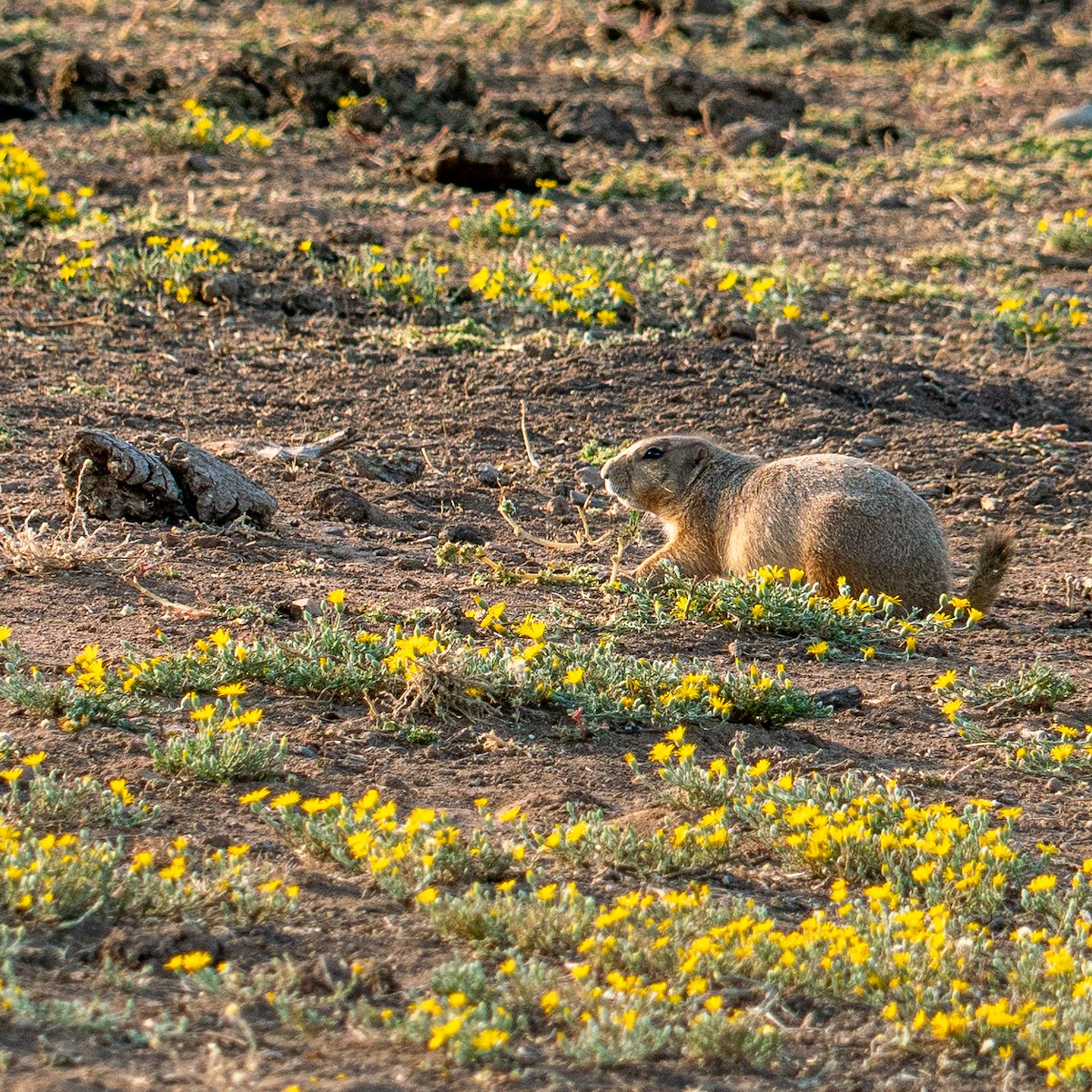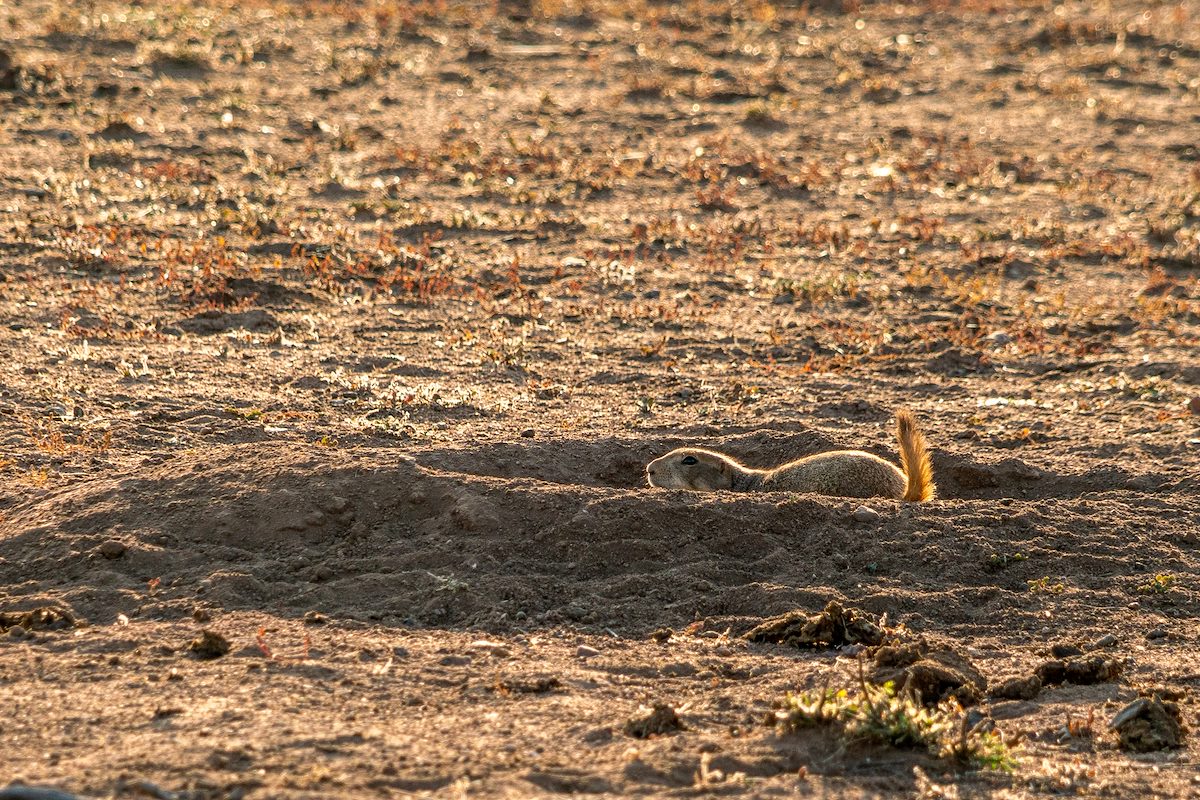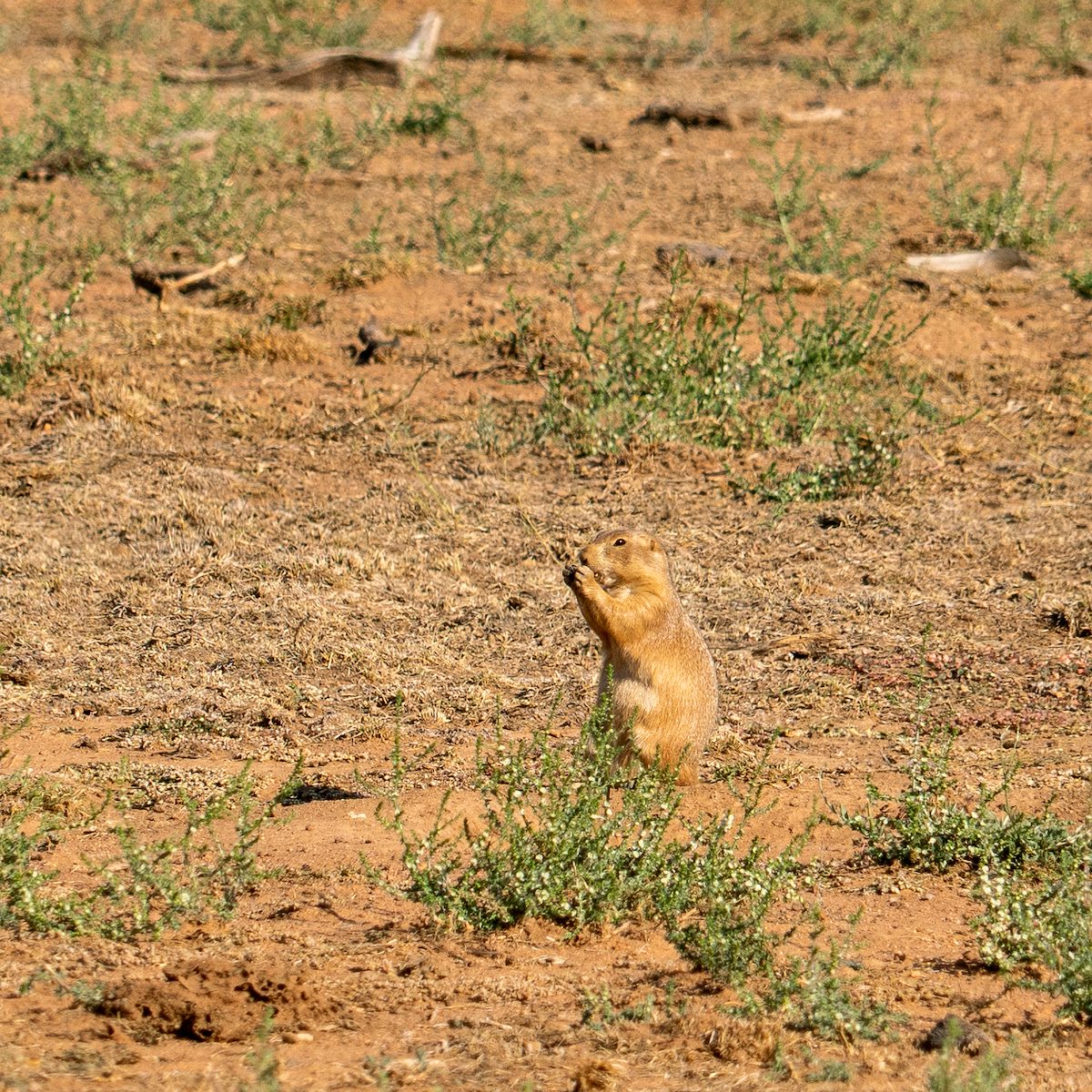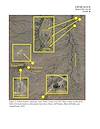
The genus Cynomys first appeared in the grasslands of North America some 2 million years ago - the black-tailed prairie dog, Cynomys ludovicianus, emerged onto the plains 40,000 to 22,000 years ago. Their range stretched from modern-day Canada, thru the Great Plains states, into Southeastern Arizona and northern Mexico.
By the early 1900s there were billions of black-tailed Prairie Dogs. Their population numbers may have been helped by the introduction of cattle to the American Southwest. Black-tailed prairie dogs rely on vision to spot predators and need areas with clear lines of sight to thrive - an increasing number of cattle grazed and trampled grasses across the southwest in the 1800s. From The Black-tailed Prairie Dog Conservation Assessment and Strategy, page 3:
In the 1800s, black-tailed prairie dogs were considered quite abundant throughout their range in southeastern Arizona. In 1907, Mearns (cited in Hoffmeister 1986) reported that "For miles the burrows of these animals are thickly scattered over the plains south of the Pinaleno range or Sierra Bonito, where the soil is clayey and better suited to the habits of this animal than the loose sand of most of Arizona." Black-tails ranged from the Sulphur Springs Valley north of Bonito, south to the Mexican border, and west to the Sonoita grasslands, on the west side of the Huachuca Mountains.
But the 20th century has been cruel to these small rodents - considered pests government sponsored poisoning campaigns peaked in the the 1930s and 40s and had a major impact on population numbers - with the additional pressures of habitat loss (conversion of range lands into agricultural fields, urbanization) and disease the species was lost in Arizona. From The Black-tailed Prairie Dog Conservation Assessment and Strategy, page 4:
Although Alexander (1932) considered black-tailed prairie dogs extirpated by 1932, Charles Vorhies collected two animals six miles southeast of Fort Huachuca in 1938 (Hoffmeister 1986). In 1962, in a memorandum to the Bureau of Sports Fisheries and Wildlife Regional Director, Everett M. Mercer documents the persistence of a small black-tailed prairie dog colony near Apache, Arizona until 1959-1960. Cockrum (1960) considered black-tailed prairie dogs extirpated from Arizona in 1960

Founded in 1876 the Empire Ranch also thrived in the late 1800s - at its largest it stretched from the Mexican border to the Rincon Mountains. The ranch came into the 1900s still owned by one of the founders, Walter Vail, and as part of the Empire Land & Cattle Company whose holdings included an 87,500 acre ranch around Temecula, California.
Walter Vail died in 1906 and his 4th son William Banning Vail took over and ran the ranch until its sale in 1929 to the Boice Families' Chiricahua Ranches Company.
In 1939 the Forest Service reduced the number of cattle permitted on forest ranges. As a result in the 1940s and early 1950s a number of Empire Ranch properties were sold - these included the Ingram Ranch south of the Pantano, Andrada Ranch in Davidson Canyon, Sanford Ranch to the northeast in the Cienega Valley and Edward Vail’s Vail Ranch in nearby Rosemont.
In the 2nd half of the 20th century Empire Ranch twice avoided it's own kind of extirpation - first as part of a proposed residential community with a projected population of 180,000 people (blocked by Pima and Santa Cruz Counties over water issues) and then as part of an Anamax Mining Corporation plan to mine copper at Rosemont (Anamax dropped their plans after a significant drop in copper prices).
In 1988 the Empire Ranch became Federal land administered by the Bureau of Land Management and in 2000 the Las Cienegas National Conservation Area was established, preserving and protecting the ranch.

The Empire Ranch made it into 21st century Arizona - black-tailed prairie dogs didn't.
But on three small sites in Las Cienegas National Conservation Area black-tailed prairie dogs are back. The first colony was established in 2008 by Arizona Game and Fish with 74 prairie dogs trapped at Ladder Ranch in New Mexico. Two additional colonies were added in 2009 and 2010. (In 2017 another colony was established on Pima County's nearby Sands Ranch outside of the Las Cienegas National Conservation Area.)

Who knows what happens now, so far the 21st century is filled with uncertainty... The good news is that a decade after the Empire Ranch releases you can still find alert prairie dogs watching you from their dens, eating and yipping - what a world it would be if both the Empire Ranch and the dogs could make it into the 22nd century.



Notes:
- The information on black-tailed prairie dogs in this post largely came from two sources: Prairie Dogs in the Chihuahuan Desert: History, Ecology, Conservation from the Chihuahuan Desert Research Institute and The Black-tailed Prairie Dog Conservation Assessment and Strategy.
- There is quite a bit of Empire Ranch history easily available via an internet search - for this post I enjoyed reading the Empire Ranch - Historic American Landscapes Survey.









